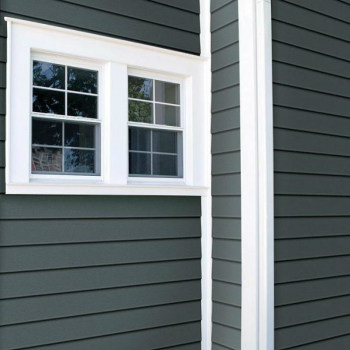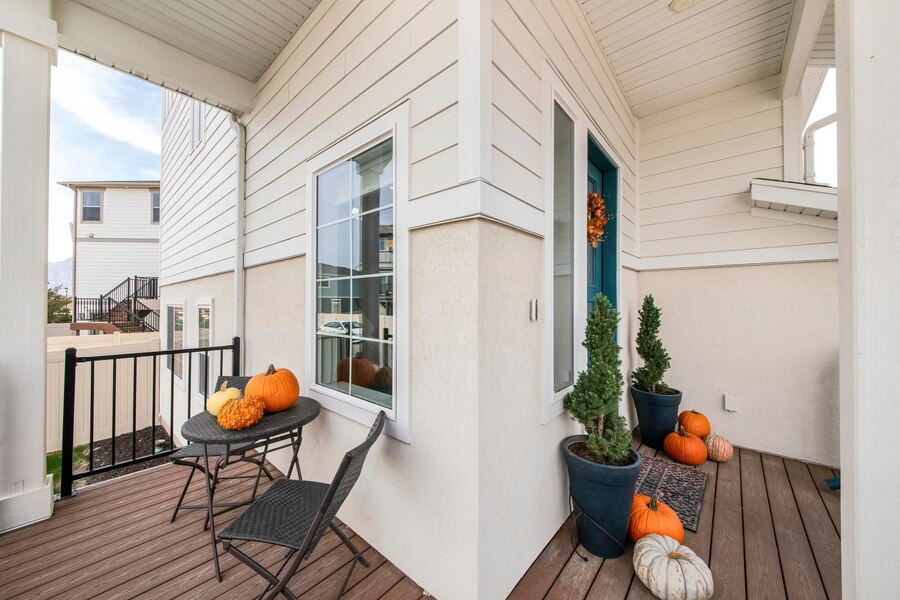
Siding: Maintenance Tips for Longevity and Appeal
When it comes to maintaining your home’s exterior, siding plays a crucial role in both aesthetics and protection. Proper upkeep can extend the life of your siding, enhance your home’s curb appeal, and even save you money in the long run. Whether your home is clad in vinyl, fiber cement, wood, or any other material, a little maintenance goes a long way. Let’s dive into some practical tips to keep your siding looking great and functioning well for years to come.
Understanding Your Siding
Before we dive into maintenance tips, it’s important to understand the type of siding you have. Each material has its own unique characteristics and maintenance requirements:

Vinyl Siding
Vinyl siding is highly favored for its exceptional durability and minimal upkeep. Made from polyvinyl chloride (PVC), it resists rot, insects, and harsh weather conditions. It can imitate the look of wood or other materials, offering aesthetic flexibility without the frequent maintenance wood requires. Over time, however, vinyl siding may show signs of discoloration or damage due to sun exposure, but it generally remains a low-maintenance choice for homeowners.
Fiber Cement Siding
Fiber cement siding is a robust material composed of cement, sand, and cellulose fibers, offering excellent resistance to fire, insects, and rot. Known for its impressive longevity, it can replicate the look of wood, stucco, or masonry, providing both aesthetic and practical benefits. Its durability makes it a long-term investment, though it may require periodic painting to maintain its appearance and protect against the elements.
Wood Siding
Wood siding, prized for its classic and natural charm, adds warmth and character to any home. However, it demands regular maintenance to safeguard against rot, warping, and insect infestations. To preserve its beauty and longevity, wood siding should be repainted or stained every few years. Despite its upkeep needs, many homeowners value wood siding for its timeless appeal and customizable options.
Metal Siding
Metal siding, commonly made from aluminum or steel, offers superior durability and resistance to many common issues such as rot and pests. It withstands various weather conditions, making it a reliable choice for many climates. However, metal siding can be susceptible to dents and scratches, which may require repair or touch-ups. Despite this, its strength and low maintenance make it a practical option for protecting your home’s exterior.
Regular Cleaning
Clean Your Siding Regularly
Dirt, grime, and mildew can accumulate on your siding, impacting its appearance and potentially leading to more serious issues. Aim to clean your siding at least once a year. Here’s how:
- Vinyl Siding: Use a mixture of mild soap and water. A soft-bristle brush or sponge can help remove stubborn stains. For tougher grime, a power washer set to a low pressure can be effective, but be careful not to use too much pressure as it can damage the siding.
- Fiber Cement Siding: Clean with a mild soap solution and a soft brush or cloth. Avoid using high-pressure washers, as they can cause damage.
- Wood Siding: Wash with a mild detergent and water using a soft brush. Be gentle to avoid removing any protective finish. A soft wash can help remove mildew and dirt.
- Metal Siding: Clean with a mild detergent and water. Avoid abrasive cleaners which can scratch the surface.
Remove Mildew and Mold Promptly
Mildew and mold can significantly impact both the appearance and structural integrity of your siding. Left untreated, these issues can lead to more severe problems such as decay or discoloration. To effectively remove mildew and mold, mix one part bleach with four parts water. Apply this solution generously to the affected areas and allow it to sit for approximately 10 minutes to penetrate and loosen the mold. Use a soft brush to scrub the surface gently, ensuring you reach all the affected spots.
After scrubbing, rinse the area thoroughly with clean water to remove any remaining bleach and residue. Always remember to wear gloves and a mask to safeguard yourself from bleach fumes during the cleaning process.
Inspecting for Damage
Regularly Inspect Your Siding
Frequent inspections can help you catch and address issues before they become major problems. Check for:
- Cracks and Holes: Look for any cracks or holes in your siding. These can allow moisture to penetrate, leading to more serious damage. Small cracks can be filled with a siding repair caulk, while larger issues might require professional attention.
- Loose Panels: Ensure that all panels are securely attached. Loose siding can be a sign of underlying issues and can lead to water damage.
- Peeling Paint: For wood siding, peeling or chipping paint is a sign that it’s time to repaint. This helps protect the wood from moisture and insects.
- Warping and Buckling: Check for any signs of warping or buckling. This can indicate moisture problems or improper installation.
Address Issues Promptly
Addressing minor issues with your siding promptly can prevent them from developing into more serious problems. Small cracks or gaps are common issues that can often be easily repaired with high-quality caulk. By sealing these cracks as soon as you notice them, you can prevent moisture from seeping in and causing further damage. Similarly, loose or shifting panels can be re-secured, which helps maintain the siding’s effectiveness and appearance.
Preventing Water Damage
Proper drainage is essential to prevent water damage. Ensure that your gutters and downspouts are clean and functioning well. This helps prevent water from overflowing and running down your siding, which can lead to rot and other issues.
Check for Caulking and Sealing
Caulking and sealing are crucial for keeping water out of your home. Regularly check the caulking around windows, doors, and joints. Replace any caulk that has cracked or deteriorated to ensure that water doesn’t penetrate behind your siding.
Inspect Your Roof
Your roof plays a significant role in protecting your siding from water damage. Ensure that your roof is in good condition, with no missing shingles or leaks. Regular roof maintenance can prevent water from seeping into your siding.
Seasonal Maintenance
Winter can be harsh on your siding. Before the cold weather sets in, inspect your siding for any damage that could be exacerbated by freezing temperatures. Ensure that gutters and downspouts are clear of debris to prevent ice dams, which can cause water to back up and damage your siding.
Summer Care
During the hot summer months, the sun can cause siding to expand and contract. This is especially true for vinyl siding. Regular inspections and cleaning can help address any issues that arise from temperature fluctuations.
Spring and Fall Maintenance
Spring and fall are ideal times for thorough inspections and maintenance. In the spring, look for any damage from winter weather, and in the fall, ensure that leaves and debris are cleared from gutters and around the base of your siding.
Enhancing Your Siding’s Longevity
Consider Protective Coatings
For certain types of siding, protective coatings can add an extra layer of defense against the elements. For example, applying a sealant to wood siding can help protect it from moisture and insects.
Upgrade to Higher Quality Materials
If your siding is reaching the end of its lifespan, consider upgrading to higher quality materials. Modern siding options often come with better warranties and require less maintenance. Investing in quality siding can pay off in the long run with improved durability and appearance.
Regularly Update Your Exterior
Keeping your home’s exterior updated not only improves curb appeal but can also prevent issues with your siding. Consider repainting or staining wood siding, and make sure to address any damage or wear as it occurs.
Hire Professionals for Major Repairs
While DIY maintenance is often sufficient for minor issues, major repairs should be handled by professionals. They have the expertise and tools to address complex problems and ensure that repairs are done correctly.
Conclusion
Maintaining siding is crucial for ensuring its longevity and preserving the curb appeal of a home. Regular inspections, prompt repairs, and proper cleaning are key steps in extending the lifespan of siding. Addressing issues like mold growth, cracks, and warping early on prevents more significant damage and maintains the integrity of the home’s exterior. For expert advice and professional maintenance services, EZ Window Solutions of Beachwood is available to help. Reach out at (440) 773-4396 to learn more about how to keep siding in top condition and enhance the home’s appeal and durability.


Write a Comment